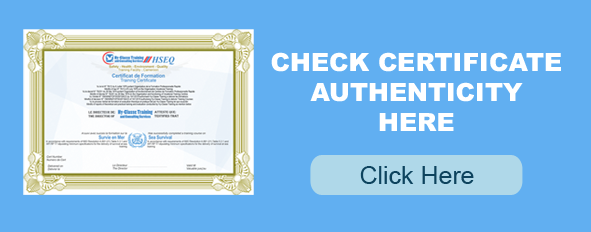Upon completion of this course participants will be able to:
Scaffolding Safety Training

- Manage risks while building and dismantling scaffolds
- Inspect equipment and scaffolds.
- Construct and dismantle scaffolds.
- Correctly construct and verify access to work platforms on scaffolds
- Correctly construct and verify work platforms on scaffolds.
- Understand the use and importance of guardrails, toe boards and other collective protective equipment
- Correctly erect and dismantle scaffolds
- Assess the rigidity and stability of scaffolds
- Carry out inspections on scaffolds
Training Duration:
This Sacffolding Safety Training has a duration of 3 days with a ratio of 50% theory to 50% Practicals. This includes classroom presentations, discussion, exercises and practical sessions. Participants will Build, inspect, perform work on scaffold and dismatle it. We can organise the training onsite in Cameroon, Chad, Congo, Central African Republic, Gabon and Equatorial Guinea
Training Prerequisite:
Participants for this Sacffolding Safety Training must be 18 years of age and be physically capable of performing scaffolding activities. They should be able to understand either basic English or basic French.
Who will Benefit from this Training:
This Sacffolding Safety Training is suitable for managers, supervisors, Site workers, site managers, safety committees, first line supervisors, accident investigation team members, employees working on or near Scaffolds and any other other person involve in the errection, dismantling, modification and working on scaffolds
Training Course Outline:
Introduction to Scaffolding
- Legislation and Regulations
- Code of Practice for Access and Working on Platforms
- Components, Standards, Ledgers, Couplers etc
- Foundations, Bracing and Tying Scaffolds
- Working Platforms, Ladder Access, Manual Handling
- System Scaffolds, Kwikstage, Cup Lock and RMD
- Theory of Basic Independent Scaffold using Kwikstage
Legislation, Codes of practice in scaffolding.
- Risk management procedures and scaffolding risk control.
- Plan Work - Site requirements and rules; site hazard identification; emergency procedures; priorities; scaffold fit for the purpose.
- Rope work including bowline; clove hitch; timber hitch; rolling hitch; use of gin wheels.
- Identify scaffold components and use; identify damaged components.
- Identify individual modular systems, their advantages/disadvantages.
- Tube and Coupler overview and use.
- Ground Bearing Pressure related to live load; dead load.
- Minimums and Maximums including lift height bay width, length light/medium/heavy duty scaffolds; bracing of scaffolds; tying of scaffolds.
- Estimation of material.
- practical Training - Erect modular scaffold; use tube and coupler where necessary to modify; tag completed scaffold; dismantle scaffold and stow gear.





